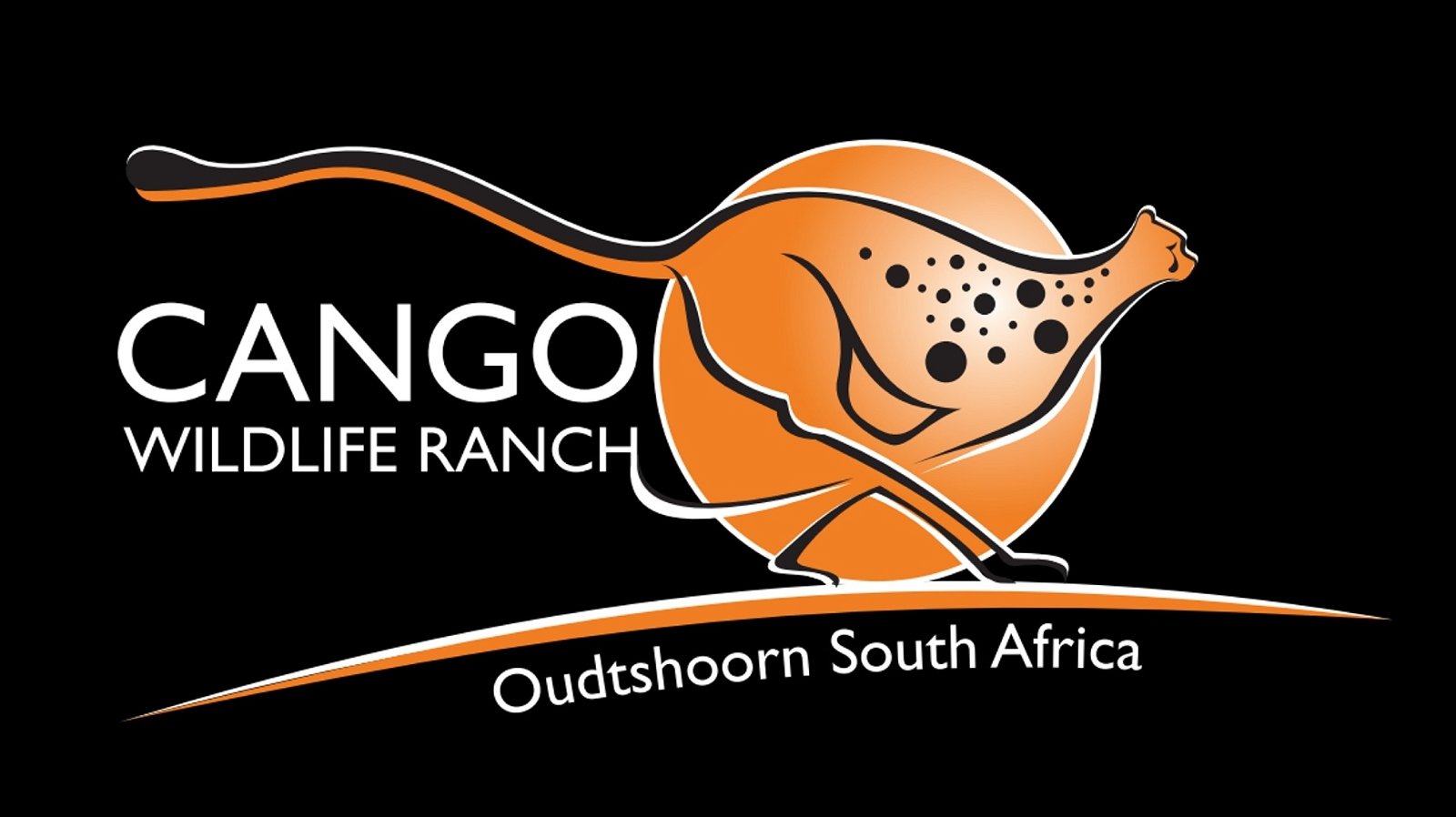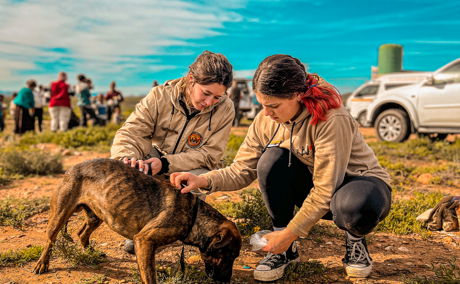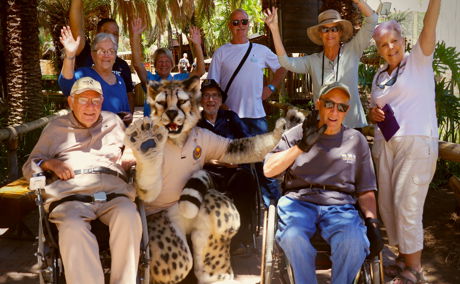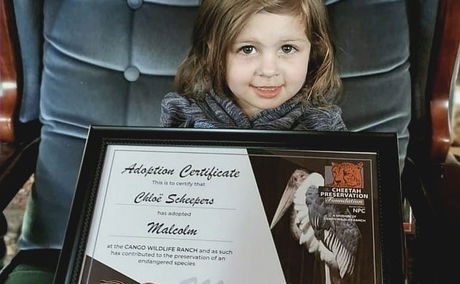Today, we celebrate the life and legacy of a man who fought tirelessly for justice in our country. Nelson Mandela Day was launched in 2009 in recognition of Madiba’s birthday on 18 July, via unanimous decision of the UN General Assembly. This day is a global call to action for citizens of the world to take up the challenge of spending 67 minutes of their day serving others and thereby following in...
A Klein Karoo first: The tropicbird mystery
An exotic seabird found in the semi-desert
The natural world is full of mysteries – but few surpass the tale of the lone migratory seabird, who ended up in the semi-desert town of Calitzdorp, 80km as the crow flies, from the closest beach.
The Red-tailed Tropicbird breeds on remote tropical islands as far east as the Hawaiian Islands, and also on the south-west Australian coast. Outside of breeding season they may travel as far north as Japan and as far south as New Zealand. They are also known to breed on the coast of Mozambique. South Africans very rarely come across these ‘air dancers’, with the last believed sighting being four years ago near Port Elizabeth … Until the 2nd of February 2019, when a call came in mid-morning about an ‘odd-looking bird’ who was found in, of all the places in the world, Bergsig, Calitzdorp, by a local named Joseph.
 The Red-Tailed Tropicbirds' normal range
The Red-Tailed Tropicbirds' normal range
Joseph lives in the North-Western side of Royal Heights, Calitzdorp - a community often exposed to unemployment, poverty and crime. On Friday, the 1st of February, at dusk he noticed a group of peers circling around something and upon investigation, walked in on what bird enthusiasts would refer to, as the most bizarre bird sighting in recent Klein Karoo history. A true hero at heart, he saved the bird from the crowds and took him to the one person he knew would be able to help. Karen Whitely, resident and animal welfare activist, reported him being found and delivered him at Cango Wildlife Ranch, to a baffled and intrigued Cango Wildlife Ranch team.

He (or she - as there is no way other than DNA testing of identifying gender) was swiftly taken to our on-call veterinary for an examination which thankfully didn’t indicate any injuries or breakages. He weighed 550g, which is a little skinny, but not far off from its 600g-800g range, which meant he hadn’t been ‘lost’ for too long. Upon sound advice from a specialist in the marine bird field, our team started feeding him squid, which he has taken to. He is becoming more and more energetic and ‘talkative’. Human contact causes damage to their waterproof plumage which means our team always makes use of gloves when working with the rescued bird.
 We have reported him to SANCCOB (The Southern African Foundation for the Conservation of Coastal Birds) and have also applied for the required permits to transport him to their facility in Cape Town to ensure in this exotic and fly-loving birds’ long-term wellbeing. He is temporarily safely residing in our Animal Care Centre. Due to their species-specific need for water, three lukewarm baths (between 29 – 30 degrees Celsius) are drawn for him every day for much needed, and much enjoyed, swim time!
We have reported him to SANCCOB (The Southern African Foundation for the Conservation of Coastal Birds) and have also applied for the required permits to transport him to their facility in Cape Town to ensure in this exotic and fly-loving birds’ long-term wellbeing. He is temporarily safely residing in our Animal Care Centre. Due to their species-specific need for water, three lukewarm baths (between 29 – 30 degrees Celsius) are drawn for him every day for much needed, and much enjoyed, swim time!
“Though we don’t really have the means to house a seabird in the Klein Karoo, we are doing everything in our power to make sure he has the best care whilst with us” Narinda Beukes - Director: Zoological.
The hope is to set him up for a release back into the wild which means that all human contact is being kept to a minimum. Our team has grown to care for the brave seabird and have caringly, and with a sense of humour, named him Karoolus, without him knowing (the rewilding process includes minimum human imprinting and the care team takes that very serious). To what extent release would be possible, we’ll have to wait and see… but with the likes of an adventure-bird like Karoolus, nothing is impossible!
The riddle of how he made it to Calitzdorp remains exactly that – a riddle, which has had bird enthusiasts and professionals scratching their heads in disbelief. The Cango Wildlife Ranch team will be delivering Karoolus to SANCCOB themselves, to make sure he travels safely, with minimal stress and to hand him over with piece of mind. If you would like to help fund the facility in this trip to Freedom for Karoolus, please contact Carmen, the non-profit Cheetah Preservation Foundation manager on [email protected]

About the mystery bird
Named for its famously elongated tail feathers which are bold red and can measure up to 35 cm, the Red-tailed Tropicbird was perfectly designed for a life at sea. So much so, that they can remain at sea indefinitely. They are graced with a sharp and strong bill with serrated edges, used for holding on to slippery fish, or for reminding the Cango Animal team that he’s from the sea! They have a robust body with aerodynamic long, sharply-pointed wings, between 104 and 119cm long, much needed when soaring far out at sea. And boy can they fly – these birds fly with rapid wing beats and are perfectly adapted for acrobatic manoeuvres in the air. They can reach impressive altitudes by soaring upwards, making use of rising thermals. Though they are rock stars of the sky, they are as fast in the air as they are clumsy on land. With their rearward set legs and feet being too far back to support them, they are capable of what we would call a funky shuffle when moving about.
Further Reading
Today, on 3 September 2021, across South Africa, we celebrate Casual Day. Casual Day is the National Council of and for Persons with Disabilities (NCPD)’s flagship awareness and fundraising project. This annual campaign has been running since 1995! The public’s contribution of R20.00 for a Casual Day sticker entitles them to express their individual interpretation of the yearly theme through their outfits, showing their support for the full inclusion and equity of...
In the midst of trauma, terror and pandemics, there are always heroes who emerge. Beacons of hope who come in all shapes and sizes and help show humanity the way forward. We saw such a (tiny) hero arise…

















Share This Post